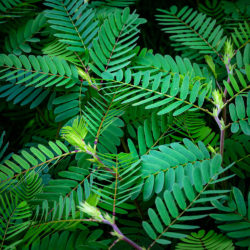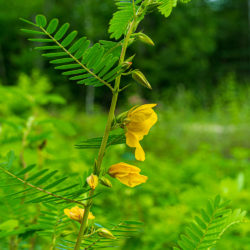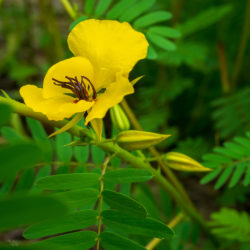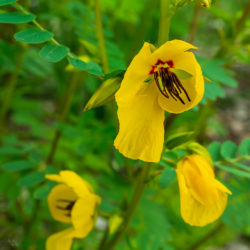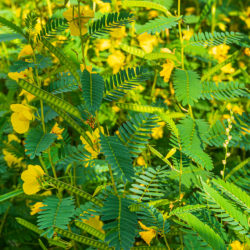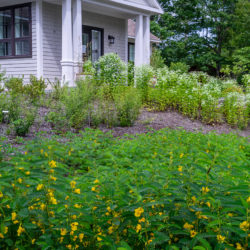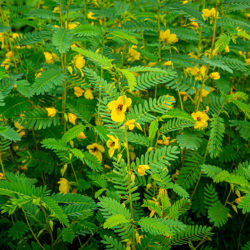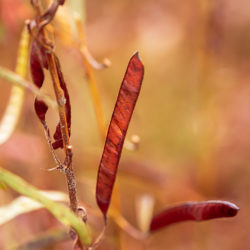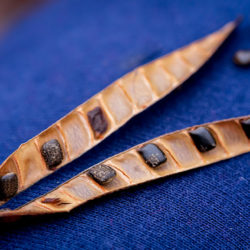Etymology
Chamaecrista is Greek (Chamae) for low-growing or humble and (christa) for crest or ridge; fasciculata is Latin for bundle, or bunch of flowers.
Native Habitat
Sunny, open woodlands, meadows and grasslands.
Garden Uses
Showy color in meadow gardens and borders. Can be used as quick erosion control in disturbed areas, as deeper-rooted perennials establish. Tolerant of many well-drained to dry soils, and sun to partial shade.
Overview
This showy, annual, deciduous herb grows 1 to 3 feet tall. Common names result from 2 plant characteristics: seeds are excellent fodder for game birds, and feathery leaves fold together when touched. Flowers provide bright summer color in sunny, open woodlands, meadows and grasslands. Partridge pea is nitrogen-fixing. It has been documented as native to southern New England, but is likely to have been introduced to Maine.
Leaves and Stems
Leaves are smooth, alternate, and feather-like (pinnately compound), growing one leaf per node along the stem. Each is 1/3- to 3/4-inch long. Color can be yellow to blue-green. Stems are generally hairless and erect when young, but tending toward sprawling as they branch.
Flowers
Predominantly yellow blooms, 1/2 to 1-1/2 inches across, with red stamens and markings. Two to seven flowers arise from each leaf axil. Bloom is sequential through summer and into early autumn. Each flower has 5 rounded petals, often with an enlarged lower petal, and 10 stamens, each up to 1/3 inch long. Style is green, slender, and curved.
Fruit/Seed
Narrow maroon pea pods follow flowering. These are up to 2 inches long, and split open when ripe.
Animal Associates
Flowers attract bees and butterflies, and are a larval host to some butterflies including Colias eurytheme (orange sulfur) and Abaeis nicippe (sleepy orange). Seed pods are eaten by both song and game birds. Deer enjoy browsing the entire plant.
Propagation
Readily self-seeds
Ethnobotanical Uses
The Seminole and Cherokee both used the Partridge pea plant. A decoction was used for nausea, an infusion for fainting, and a root medicine was made to keep people awake.
Garden Location
Library Garden (see garden map)
Sources
Lady Bird Johnson Wildflower Center
Plant Profile by Kate O’Dell

